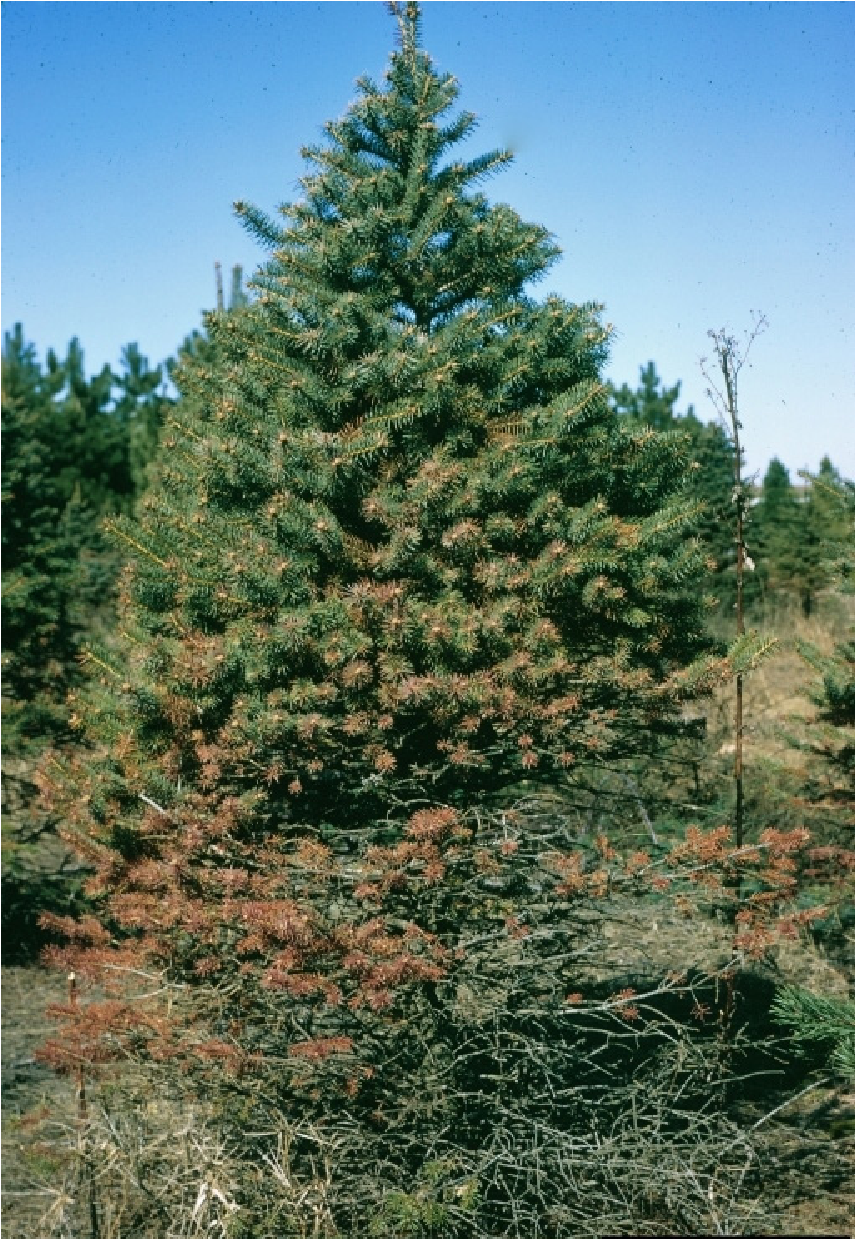Sudden Needle Drop (SNEED) (Scientific Name: Setomelanomma holmii - Fungus)

Figure 1: Dark fruiting bodies emerge on branches. Photo by Eva Grimme, Montana State University.
Hosts:
Colorado blue spruce, white spruce, Norway spruce
Damage/symptoms:
Older needles turn yellow and/or brown and are shed by fall. Only newest needles may stay green at the tip of branches. Affected branches may be scattered throughout the tree. The canopy of affected trees may thin out over time.
Disease cycle:

Figure 2. Spruce tree affected by needle cast disease. Photo by USDA Forest Service
- North Central
Research Station, Bugwood.org.
This disease mainly affects stressed trees. The fungus overwinters in infected branches. Small, black fruiting bodies can be found on the branches, bud scales, and on the woody tissue at the base of needles but not on/in the needles. Since this is a relatively new disease, not many details are known about its life cycle.
Management:
Control measures applied to control Rhizosphaera needle cast disease appear to manage SNEED as well. Provide good spacing between trees to optimize air circulation and to shorten wetness of needles. Re-direct sprinklers to avoid hitting the tree canopy during irrigation. Affected trees can be treated with a fungicide containing the active ingredient copper or chlorothalonil. Apply fungicides in spring when new needles have grown half their mature length. A second treatment should be applied 3 to 4 weeks later when new needles are fully grown. Strictly follow instructions on the pesticide labels.

Figure 3. Close-up of fruiting bodies. Photo by Eva Grimme, Montana State University.
By Eva Grimme, MSU Associate Extension Specialist III. May 2025. For more information, contact diagnostics@montana.edu.
This May 2025 fact sheet is also available as a printable PDF (1,000 KB).
Disclaimer: These recommendations are provided only as a guide. It is always the pesticide applicator’s responsibility, by law, to read and follow all current label directions for the specific pesticide being used. The authors and Montana State University assume no liability resulting from the use of these recommendations. The Montana State University Extension Service is an ADA/EO/AA/Veteran’s Preference Employer and Provider of Educational Outreach.
